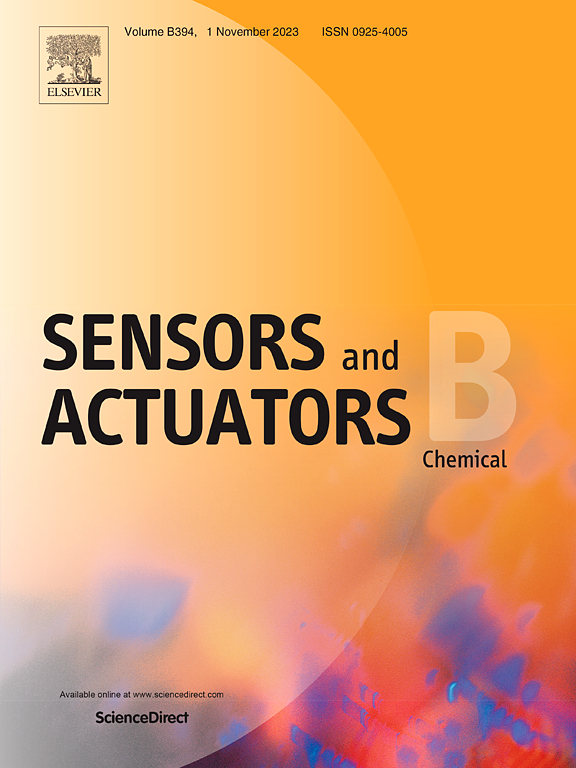IF 8
1区 化学
Q1 CHEMISTRY, ANALYTICAL
引用次数: 0
摘要
快速灵敏地检测食源性病原体对于确保食品安全和保护公众健康至关重要。在这项研究中,我们开发了一种创新的微流控荧光数字分析平台,该平台通过深度学习增强了对超低浓度病原体的检测能力。该生物传感器采用交错人字形双螺旋(SHDS)微流体设计,无缝集成了细菌捕获、检测和释放过程,使用量子点(QD)-色聚体共轭物进行精确识别。荧光图像分析由基于 Resnet-18 的卷积神经网络 (CNN) 支持,可直接量化荧光图像中的大肠杆菌浓度,从而简化数据处理并提高灵敏度。该平台的线性检测范围从 10 到 3 × 10⁶ CFU/mL(R² = 0.990),在细菌浓度较低(4 × 10² CFU/mL)时捕获效率高达 100%,并在 1.5 小时内达到 2 CFU/mL 的超低检测限。CNN 模型能有效过滤背景噪声和干扰,预测准确率超过 99%。使用牛奶和鸡肉样品进行验证后,回收率高达 96.7% 至 104.0%。这种生物传感器为复杂食品基质中的病原体检测提供了一种快速、可靠和实用的解决方案,大大提高了食品安全和保障水平。本文章由计算机程序翻译,如有差异,请以英文原文为准。

Rapid and ultra-sensitive detection of foodborne pathogens by deep learning-enhanced microfluidic biosensing
Rapid and sensitive detection of foodborne pathogens is essential for ensuring food safety and protecting public health. In this study, we developed an innovative microfluidic fluorescence digital analysis platform enhanced by deep learning to detect pathogens at ultra-low concentrations. The biosensor features a staggered herringbone double-spiral (SHDS) microfluidic design, seamlessly integrating bacteria capture, detection, and release processes using Quantum dot (QD)-Aptamer conjugates for precise identification. Fluorescence image analysis, powered by a Resnet-18-based convolutional neural networks (CNN), directly quantifies Escherichia coli (E. coli) concentrations from fluorescence images, streamlining data processing and increasing sensitivity. The platform offers a linear detection range from 10 to 3 × 10⁶ CFU/mL (R² = 0.990), achieves capture efficiencies of up to 100 % at low bacterial concentrations (4 × 10² CFU/mL), and offers an ultra-low detection limit of 2 CFU/mL within just 1.5 hours. The CNN model effectively filters out background noise and interferences, achieving over 99 % predictive accuracy. Validation using milk and chicken samples resulted in high recovery rates (96.7 % to 104.0 %). This biosensor presents a rapid, reliable, and practical solution for pathogen detection in complex food matrices, significantly improving food safety and security.
求助全文
通过发布文献求助,成功后即可免费获取论文全文。
去求助
来源期刊

Sensors and Actuators B: Chemical
工程技术-电化学
CiteScore
14.60
自引率
11.90%
发文量
1776
审稿时长
3.2 months
期刊介绍:
Sensors & Actuators, B: Chemical is an international journal focused on the research and development of chemical transducers. It covers chemical sensors and biosensors, chemical actuators, and analytical microsystems. The journal is interdisciplinary, aiming to publish original works showcasing substantial advancements beyond the current state of the art in these fields, with practical applicability to solving meaningful analytical problems. Review articles are accepted by invitation from an Editor of the journal.
 求助内容:
求助内容: 应助结果提醒方式:
应助结果提醒方式:


